Related Research Articles
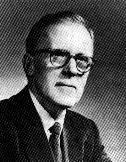
Donald Olding Hebb was a Canadian psychologist who was influential in the area of neuropsychology,where he sought to understand how the function of neurons contributed to psychological processes such as learning. He is best known for his theory of Hebbian learning,which he introduced in his classic 1949 work The Organization of Behavior. He has been described as the father of neuropsychology and neural networks. A Review of General Psychology survey,published in 2002,ranked Hebb as the 19th most cited psychologist of the 20th century. His views on learning described behavior and thought in terms of brain function,explaining cognitive processes in terms of connections between neuron assemblies.

Amblyopia,also called lazy eye,is a disorder of sight in which the brain fails to fully process input from one eye and over time favors the other eye. It results in decreased vision in an eye that typically appears normal in other aspects. Amblyopia is the most common cause of decreased vision in a single eye among children and younger adults.
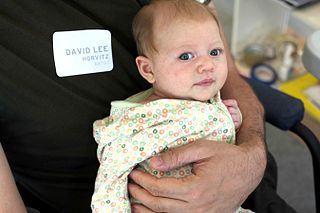
Infant vision concerns the development of visual ability in human infants from birth through the first years of life. The aspects of human vision which develop following birth include visual acuity,tracking,color perception,depth perception,and object recognition.

Adele Dorothy Diamond is a professor of neuroscience at the University of British Columbia,where she is currently a Tier 1 Canada Research Chair in Developmental Cognitive Neuroscience. One of the pioneers in the field of developmental cognitive neuroscience,Diamond researches how executive functions are affected by biological and environmental factors,especially in children. Her discoveries have improved treatment for disorders such as phenylketonuria and attention-deficit hyperactivity disorder,and they have impacted early education.
Perceptual narrowing is a developmental process during which the brain uses environmental experiences to shape perceptual abilities. This process improves the perception of things that people experience often and causes them to experience a decline in the ability to perceive some things to which they are not often exposed. This phenomenon is a result of neuroplasticity,including Hebbian learning and synaptic pruning. Through these mechanisms,neural pathways that are more consistently used are strengthened,making them more efficient,while those pathways that are unused become less efficient. This process is most evident during sensitive periods of development. The prevailing theory is that human infants are born with the ability to sense a wide variety of stimuli,and as they age,they begin to selectively narrow these perceptions by categorizing them in a more socio-culturally relevant way. Most of the research in this area focuses on facial discrimination and phoneme distinction in human infants. However,other work has found that perceptual narrowing also occurs for music and sign language perception. Perceptual narrowing has also been implicated in synaesthesia.
Andrew N. Meltzoff is an American psychologist and an internationally recognized expert on infant and child development. His discoveries about infant imitation greatly advanced the scientific understanding of early cognition,personality and brain development.
Infant cognitive development is the first stage of human cognitive development,in the youngest children. The academic field of infant cognitive development studies of how psychological processes involved in thinking and knowing develop in young children. Information is acquired in a number of ways including through sight,sound,touch,taste,smell and language,all of which require processing by our cognitive system. However,cognition begins through social bonds between children and caregivers,which gradually increase through the essential motive force of Shared intentionality. The notion of Shared intentionality describes unaware processes during social learning at the onset of life when organisms in the simple reflexes substage of the sensorimotor stage of cognitive development do not maintain communication via the sensory system.
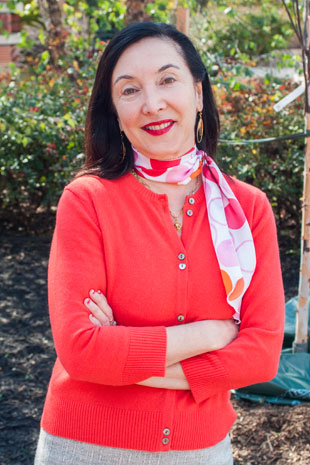
Laura-Ann Petitto is a cognitive neuroscientist and a developmental cognitive neuroscientist known for her research and scientific discoveries involving the language capacity of chimpanzees,the biological bases of language in humans,especially early language acquisition,early reading,and bilingualism,bilingual reading,and the bilingual brain. Significant scientific discoveries include the existence of linguistic babbling on the hands of deaf babies and the equivalent neural processing of signed and spoken languages in the human brain. She is recognized for her contributions to the creation of the new scientific discipline,called educational neuroscience. Petitto chaired a new undergraduate department at Dartmouth College,called "Educational Neuroscience and Human Development" (2002-2007),and was a Co-Principal Investigator in the National Science Foundation and Dartmouth's Science of Learning Center,called the "Center for Cognitive and Educational Neuroscience" (2004-2007). At Gallaudet University (2011–present),Petitto led a team in the creation of the first PhD in Educational Neuroscience program in the United States. Petitto is the Co-Principal Investigator as well as Science Director of the National Science Foundation and Gallaudet University’s Science of Learning Center,called the "Visual Language and Visual Learning Center (VL2)". Petitto is also founder and Scientific Director of the Brain and Language Laboratory for Neuroimaging (“BL2”) at Gallaudet University.

The bouba–kiki effect,kiki–bouba effect,or takete–malumaphenomenon,is a non-arbitrary mental association between certain speech sounds and certain visual shapes. The most typical research finding is that people,when presented with nonsense words,tend to associate certain ones with a rounded shape and other ones with a spiky shape. Its discovery dates back to the 1920s,when psychologists documented experimental participants as connecting nonsense words to shapes in consistent ways. There is a strong general tendency towards the effect worldwide;it has been robustly confirmed across a majority of cultures and languages in which it has been researched,for example including among English-speaking American university students,Tamil speakers in India,speakers of certain languages with no writing system,young children,infants,and the congenitally blind. It has also been shown to occur with familiar names. The effect was investigated using fMRI in 2018. The bouba/kiki effect is one form of sound symbolism.
Susan R. Barry is a Professor Emeritus of Biological Sciences and Professor Emeritus of Neuroscience and Behavior at Mount Holyoke College and the author of three books. She was dubbed Stereo Sue by neurologist and author Oliver Sacks in a 2006 New Yorker article with that name.

Melvyn Alan Goodale FRSC,FRS is a Canadian neuroscientist. He was the founding Director of the Brain and Mind Institute at the University of Western Ontario where he holds the Canada Research Chair in Visual Neuroscience. He holds appointments in the Departments of Psychology,Physiology &Pharmacology,and Ophthalmology at Western. Goodale's research focuses on the neural substrates of visual perception and visuomotor control.
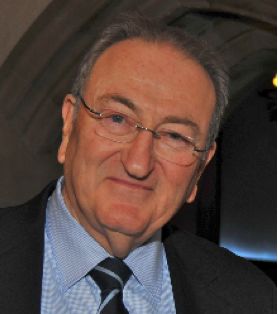
Martin Jeffrey Steinbach was an American vision researcher who spent most of his career in Canada. He was Distinguished Research Professor Emeritus in the Department of Psychology at York University. He received a master's degree from Connecticut College in 1965 and a Ph.D. from Massachusetts Institute of Technology (MIT) in 1968.
Marisa Carrasco is a Mexican psychologist,who is a professor of psychology and neural science at New York University. She uses human psychophysics,neuroimaging,and computational modeling to investigate the relation between the psychological and neural mechanisms involved in visual perception and attention.

Davida Young Teller was a professor in the Departments of Psychology and Physiology/Biophysics at the University of Washington,Seattle,Washington. She was a leader in the scientific study of infant visual development.
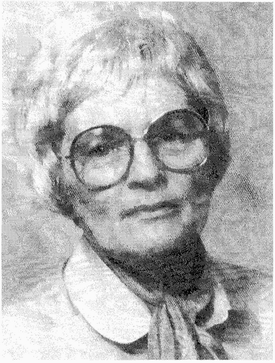
Frances K. Graham was an American psychologist and Professor of Psychology at the University of Delaware,where she was elected to the National Academy of Sciences in 1988.
Rachel Keen is a developmental psychologist known for her research on infant cognitive development,auditory development,and motor control. She is Professor Emeritus of Psychology at the University of Virginia.
Daphne Blunt Bugental was a psychologist known for her research on parent-child relationships,infant and child maltreatment,and family violence. At the time of her death,she was professor emerita of Psychology at the University of California,Santa Barbara.
The CPA Donald O. Hebb Award for Distinguished Contributions to Psychology as a Science is an annual award presented by the Canadian Psychological Association (CPA).
Beatriz Luna is a developmental neuroscientist known for conducting neuroimaging research on the development of cognitive control,reward,and reinforcement learning from early childhood to adolescence.

Ruxandra Sireteanu,also known after her marriage as Ruxandra Sireteanu-Constantinescu,was a Romanian biophysicist and neuroscientist who undertook pioneering research into the human visual system. Born in Romania,she initially studied at the University of Bucharest. She then undertook research in Pisa in Italy and Lausanne in Switzerland before moving to Germany,first joining the Max Planck Institute of Psychiatry in Munich to work with Wolf Singer,and then the University of Ulm. In 1978,she moved to Frankfurt,initially to join the local Max Planck Institute for Brain Research before inaugurating the chair in Biological Psychology at Goethe University,which she held from 1999. She also held visiting positions at universities in the United States,including the University of California,Berkeley. Her research centred on the way that the visual system developed in people from their birth into adulthood,for which she studied both healthy individuals and,particularly,those with disorders like amblyopia.
References
- ↑ "Professor Emeriti - Department of Psychology, Neuroscience & Behaviour | McMaster University". www.science.mcmaster.ca. Retrieved 2019-12-02.
- 1 2 "McMaster researcher recognized for pioneering work on visual development in infants" . Retrieved 2018-12-09.
- 1 2 Dreifus, Claudia (2012-08-27). "How Video Games Could Improve Our Vision". The New York Times. ISSN 0362-4331 . Retrieved 2019-12-02.
- 1 2 "Daphne Maurer". McMaster University. Archived from the original on 2018-12-23. Retrieved 2019-12-02.
- ↑ "Short CV" . Retrieved 2019-06-30.
- ↑ "Distinguished Contribution Award". csbbcs.org. Retrieved February 25, 2018.
- ↑ Jeon, Seong Taek; Maurer, Daphne; Lewis, Terri L. (2012-07-07). "The Effect of Video Game Training on the Vision of Adults with Bilateral Deprivation Amblyopia". Seeing and Perceiving. 25 (5): 493–520. doi:10.1163/18784763-00002391. ISSN 1878-4755. PMID 23193607.
- ↑ "Vision Screening: Home". www.visionscreening.ca. Retrieved 2018-08-09.
- 1 2 Klass, Perri (27 March 1988). "MIND/BODY/HEALTH; FRESH FROM THE BOOMY, BUMPY WOMB". The New York Times. Retrieved 2018-08-09.
- ↑ Maurer, Daphne; Maurer, Charles (1988). The world of the newborn. New York: Basic Books. ISBN 9780465092307.
- ↑ Sexton, Miriam (1991-04-01). "Book Reviews". Journal of Pediatric Psychology. 16 (2): 248–250. doi:10.1093/jpepsy/16.2.248. ISSN 0146-8693.
- ↑ "Pretty Ugly, a Book on the Biology of Aesthetics". prettyugly.info. Retrieved 2019-12-02.
- ↑ Dreifus, Claudia (27 August 2012). "How Video Games Could Improve Our Vision". The New York Times. Retrieved 2018-08-09.
- ↑ "Do we all have some synaesthetic ability?". New Scientist. Retrieved 2018-08-09.
- ↑ "Order of Canada Appointees – June 2024". Governor General of Canada. Retrieved 2024-06-27.